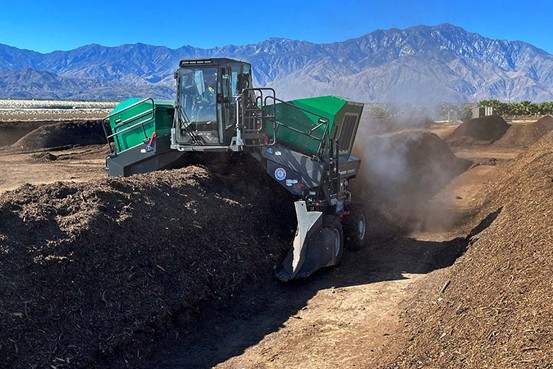Aerobic digestion, commonly known as composting, is the process of breaking down organic material in the presence of oxygen, transforming waste such as food scraps, yard trimmings, and agricultural residues into nutrient-rich compost. Unlike anaerobic digestion (AD), composting relies on aerobic microorganisms, which thrive in oxygen-rich environments, to decompose organic matter into carbon dioxide, water, heat, and stabilized organic material. The heat generated during the process helps to sanitize compost and accelerate decomposition.
The aerobic digestion process can be broken down into the following stages:
- Mesophilic Phase: This initial stage occurs at moderate temperatures (20–40°C), where mesophilic bacteria and fungi break down simple carbohydrates and proteins, generating heat as a byproduct.
- Thermophilic Phase: As the temperature rises (45–70°C), thermophilic microorganisms become more active, breaking down more complex organic compounds like cellulose and lignin. This phase is critical for pathogen reduction and the rapid decomposition of materials.
- Cooling and Maturation Phase: Once the easily degradable materials are consumed, the temperature drops, and mesophilic microorganisms return to further stabilize the compost. During this phase, the compost matures and becomes ready for use as a soil conditioner.
The overall chemical equation for aerobic digestion can be represented as:

In composting, oxygen is continually supplied to the system, either through passive aeration or by turning the compost piles, which is crucial for the proper functioning of aerobic microbes and the prevention of anaerobic zones.

Composting and Bioplastics
Biodegradable plastics, particularly those made from natural polymers, can also be composted under aerobic conditions, but their behavior in composting systems depends on the specific material. Some bioplastics are designed to break down in industrial composting facilities, where higher temperatures (above 55°C) and controlled conditions accelerate degradation. However, not all bioplastics degrade efficiently in home composting setups, which operate at lower temperatures.
The key challenge lies in the variability of bioplastics—while some can break down into water, carbon dioxide, and biomass within the composting process, others may leave behind residues or require extended timeframes to decompose. For this reason, ongoing research is evaluating the compatibility of bioplastics with standard composting systems, ensuring that these materials do not disrupt the composting process or reduce the quality of the final compost. If successfully integrated, compostable bioplastics could help reduce landfill waste and contribute to circular waste management by converting biodegradable plastics and food waste into valuable compost for agricultural and horticultural applications.


